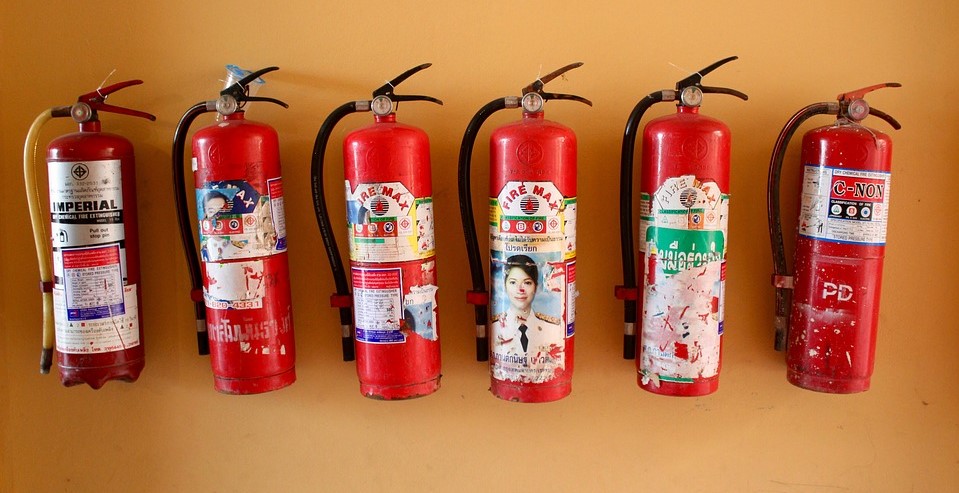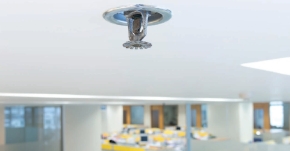Extinguishment

|

|
International Fire Safety Standards: Common Principles, Safe Buildings Save Lives, First Edition, published by the International Fire Safety Standards Coalition in 2020 defines extinguishment (or fire control) as: ‘Suppressing of fire and protecting of the surrounding environment.’
The most common extinguishing agents are:
- Water
- Foam
- Carbon dioxide
- Dry powder
- Clean agents
- Inert gases
These agents can be applied either by the occupants themselves, through auto-suppression systems, or by the fire and rescue service.
Sprinklers are designed to extinguish small fires or contain growing fires until the fire-and-rescue service arrives. Almost all buildings over 30m high must be fitted with a sprinkler system installed in accordance with the appropriate British Standards.
Sprinkler heads are heat sensitive and normally activate at 68°C. Each sprinkler head acts as its own heat detector and only those in the fire area will be activated. An individual sprinkler head typically covers around 9m2.
In certain buildings, it can be difficult for the fire-and-rescue service to safely reach and work close to fires. Under such circumstances, additional facilities are required to ensure that there is no delay and to provide a secure operating base. This might include:
[edit] Related articles on Designing Buildings Wiki
Featured articles and news
Infrastructure that connect the physical and digital domains.
Harnessing robotics and AI in challenging environments
The key to nuclear decommissioning and fusion engineering.
BSRIA announces Lisa Ashworth as new CEO
Tasked with furthering BSRIA’s impressive growth ambitions.
Public buildings get half a million energy efficiency boost
£557 million to switch to cleaner heating and save on energy.
CIOB launches pre-election manifesto
Outlining potential future policies for the next government.
Grenfell Tower Inquiry announcement
Phase 2 hearings come to a close and the final report due in September.
Progress from Parts L, F and O: A whitepaper, one year on.
A replicated study to understand the opinion of practitioners.
ECA announces new president 2024
Electrical engineer and business leader Stuart Smith.
A distinct type of countryside that should be celebrated.
Should Part O be extended to existing buildings?
EAC brands heatwave adaptation a missed opportunity.
Definition of Statutory in workplace and facilities management
Established by IWFM, BESA, CIBSE and BSRIA.
Tackling the transition from traditional heating systems
59% lack the necessary information and confidence to switch.
The general election and the construction industry
As PM, Rishi Sunak announces July 4 date for an election.
Eco apprenticeships continue help grow green workforce
A year after being recognised at the King's coronation.
Permitted development rights for agricultural buildings
The changes coming into effect as of May 21, 2024.





















